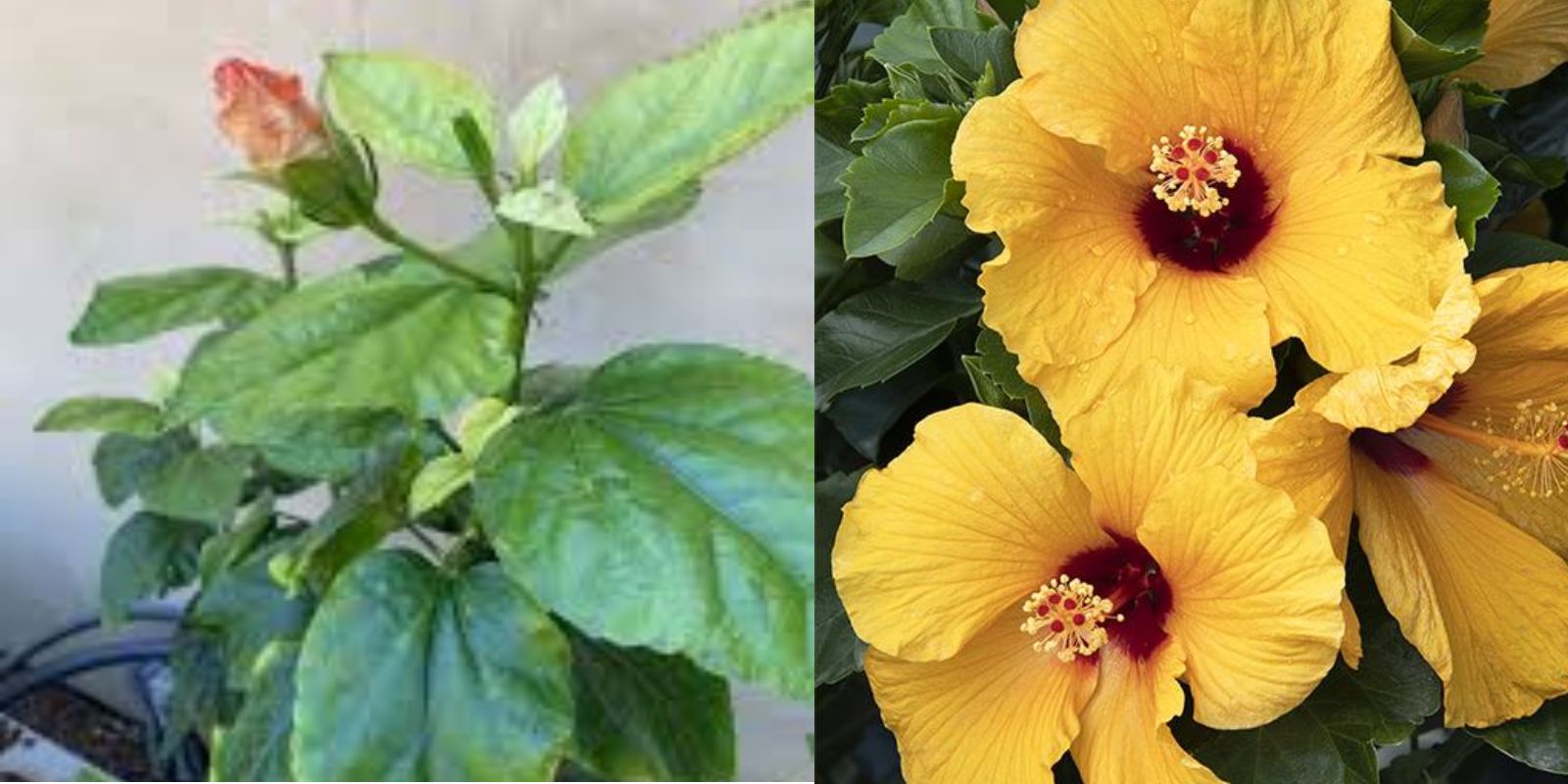Hibiscus plants are prized for their stunning flowers and lush foliage, making them a favorite among gardeners and plant enthusiasts. However, maintaining a healthy hibiscus can be tricky if you’re unaware of the common mistakes people often make. By understanding these pitfalls and learning how to avoid them, you can ensure your hibiscus thrives and graces your space with its beauty.
This article explores the most frequent mistakes in hibiscus care and offers practical solutions to keep your plant vibrant and blooming year-round.
1. Overwatering or Underwatering
Hibiscus plants require a balanced watering schedule, and getting it wrong can harm your plant. Overwatering leads to root rot, while underwatering stresses the plant, causing wilting and leaf drop.
Solution:
- Water your hibiscus when the top inch of soil feels dry.
- Ensure the pot or planting area has excellent drainage to prevent waterlogging.
- In warmer months, increase watering frequency, but reduce it in winter when the plant’s growth slows.
2. Improper Light Conditions
Hibiscus plants thrive in sunlight, but too much or too little can stunt their growth or cause leaf burn.
Solution:
- Place the hibiscus in a location with 6–8 hours of bright, indirect sunlight daily.
- For indoor hibiscus, position them near a sunny south-facing window.
- Use shade cloth in extreme summer heat to prevent leaf scorch.
3. Neglecting Fertilization
Without proper nutrients, hibiscus plants struggle to bloom and maintain healthy foliage. Over-fertilizing, on the other hand, can lead to salt buildup, damaging the roots.
Solution:
- Use a balanced, high-potassium fertilizer during the growing season.
- Apply fertilizer every 2–3 weeks, following the product’s instructions.
- Flush the soil with water occasionally to remove excess salts.
4. Failing to Control Pests
Hibiscus plants are prone to pests like aphids, whiteflies, and spider mites, which can weaken the plant and affect flowering.
Solution:
- Inspect your plant regularly for signs of pests, such as sticky leaves or tiny insects.
- Treat infestations early with neem oil, insecticidal soap, or a homemade spray of diluted dish soap and water.
- Encourage beneficial insects like ladybugs, which feed on harmful pests.
5. Planting in Poor Soil
Soil quality directly affects the health of your hibiscus. Poorly draining or nutrient-deficient soil can stunt growth and reduce blooms.
Solution:
- Use well-draining, slightly acidic soil with a pH of 6.0–6.5.
- Mix compost or organic matter into the soil to improve fertility and drainage.
- If growing in a pot, choose one with drainage holes and use a high-quality potting mix.
6. Skipping Pruning
Pruning is essential for shaping your hibiscus, encouraging new growth, and boosting flower production. Neglecting this task can result in a leggy, unattractive plant with fewer blooms.
Solution:
- Prune your hibiscus annually in early spring or late fall.
- Remove dead or weak branches and trim back overgrown stems to maintain shape.
- Always use sharp, sterilized pruning tools to prevent the spread of disease.
7. Ignoring Temperature Needs
Hibiscus plants are sensitive to extreme temperatures. Cold exposure can cause leaf yellowing and dropping, while extreme heat may lead to wilting.
Solution:
- Keep your hibiscus in temperatures between 60°F and 85°F (15°C to 29°C).
- During winter, move potted hibiscus indoors to protect them from frost.
- Avoid placing the plant near drafty windows or heat vents indoors.
8. Not Repotting Regularly
Hibiscus plants grown in pots need occasional repotting to prevent root binding and to refresh the soil. Neglecting this can stunt growth.
Solution:
- Repot your hibiscus every 2–3 years or when roots start circling the pot.
- Choose a pot 1–2 inches larger in diameter than the current one.
- Replace the old soil with fresh, nutrient-rich potting mix.
9. Overlooking Seasonal Dormancy
Many hibiscus varieties enter a dormant phase in cooler months. Failing to adjust care during this period can harm the plant.
Solution:
- Reduce watering and stop fertilizing during dormancy.
- Maintain a consistent temperature and provide some indirect light.
- Resume regular care as new growth emerges in spring.
10. Not Monitoring for Diseases
Hibiscus plants are susceptible to diseases like fungal infections and root rot, often caused by poor care practices.
Solution:
- Avoid overwatering and ensure proper air circulation around the plant.
- Remove infected leaves or branches immediately.
- Treat fungal infections with a fungicide or a homemade solution of baking soda and water.
Additional Tips for Thriving Hibiscus Plants
- Mulching: Add a layer of organic mulch around the base of your hibiscus to retain soil moisture and regulate temperature.
- Deadheading: Regularly remove spent flowers to encourage more blooms.
- Support Structures: For taller varieties, provide stakes or trellises to support the plant.
Conclusion
By avoiding these common hibiscus care mistakes and following the outlined solutions, you can enjoy a healthy, vibrant plant that produces abundant blooms. Hibiscus care requires consistency, but the effort is worth it when you see those stunning flowers brighten your garden or home.
🌺 What are your favorite hibiscus care tips? Share them in the comments below! 🌿
#HibiscusCare #PlantLovers #GardeningHacks #FlowerPower #GardenGoals #GreenThumb

